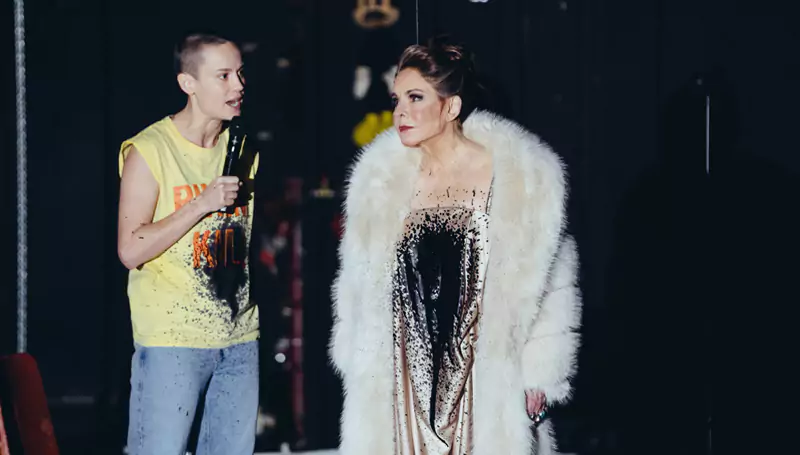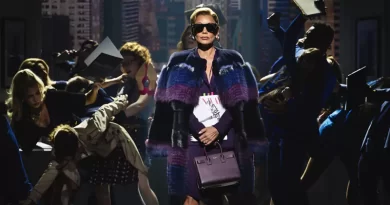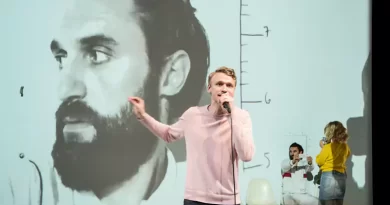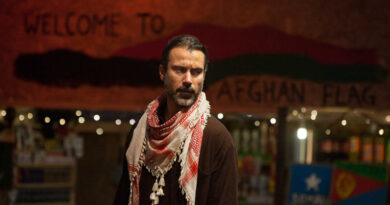“Elektra” at Duke of York’s Theatre
Neil Dowden in the West End
9 February 2025
Consecutive opening nights for radical revivals of ancient Greek tragedies by Sophocles starring Oscar-winning Hollywood actors making their West End debuts – who would have thought it? Playing the lead in Oedipus and Elektra makes big demands on any actor, but especially when they have a lot more screen than stage experience, as is the case with Rami Malek and Brie Larson appearing at the Old Vic and Duke of York’s, respectively. They deserve credit for boldly taking on the challenge but sadly – as with Sigourney Weaver’s recent Prospero in The Tempest at Drury Lane – they struggle to convince in these variously unconventional productions.
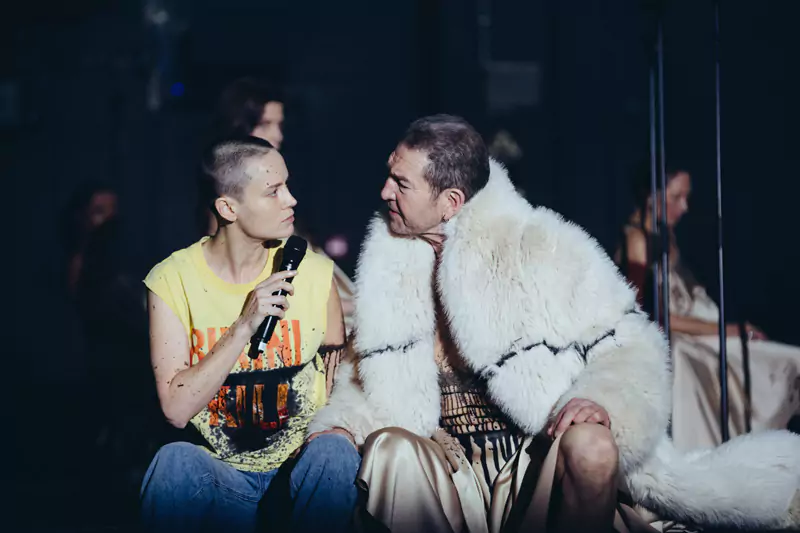
Photo credit: Helen Murray.
Not only is Elektra spelt unusually with a “k” rather than a “c” but also “Sophokles” by American director Daniel Fish, presumably to suggest an alternative version. He garnered acclaim and awards for his revisionist take on Rodgers and Hammerstein’s musical Oklahoma! in New York and London. Unfortunately, this time his experimental approach to shedding fresh light on a classic theatre work has backfired. He has used the 2001 translation by Canadian poet Anne Carson – who has translated many Greek tragedies – which has a stark beauty, though perhaps not the easiest for actors to speak. But Fish’s uninterrupted 75-minute expressionist production has stripped out the emotions of pity and horror essential for classical tragedy – so there is no catharsis at the end.
Elektra tells the same story as the middle play of Aeschylus’ Oresteia – The Libation Bearers – but, like Euripides did in his version with the same title, it foregrounds Elektra rather than her brother Orestes in telling of the killing of their mother Clytemnestra and stepfather Aegisthus in revenge for the couple having murdered their father King Agamemnon. In this production Elektra is even more the centre of attention as the other roles have been cut back. She may not be the person who carries out the assassinations but the bloody vengeance is seen from her perspective.
Larson makes a strong impact when she bounds aggressively on stage to confront the audience alone at the start. An androgynous, punky figure with a buzz-cut hairstyle and wearing a “Bikini Kill” T-shirt and jeans, this is a riot grrrl Elektra burning with anger. Throughout the performance she mainly speaks into a handheld microphone as she prowls downstage, empowered by the amplified volume to shout down any opposition. Sometimes she uses effects pedals on stage to distort the sound, producing feedback like a rock singer. The all-female chorus, wearing slinky ivory robes, also have fixed mics into which they sing a cappella as if Elektra’s backing singers.
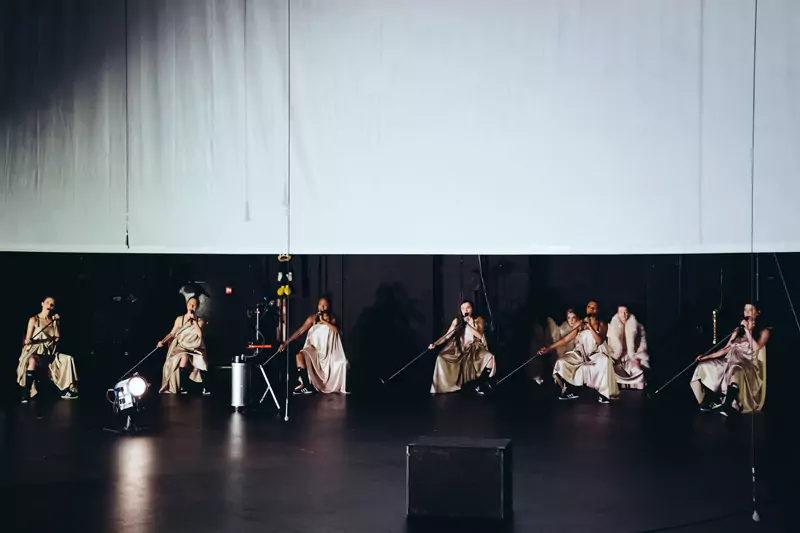
Photo credit: Helen Murray.
There is a palpable sense of frustrated fury waiting to burst out into violence – but it becomes monotonous after a while. Presumably the idea is that Elektra’s bereavement at her beloved father’s murder has after a while hardened into white-hot anger that has corroded her soul. But without any evident display of grief now, it is difficult to have much sympathy for her as she’s bent on continuing the bloodletting. Even when she belatedly recognizes Orestes after he has finally returned home as an adult, there seems to be no feeling of joy in this sibling reunion befogged in dry ice. And there is no sense of compunction before killing their mother or guilt afterwards – while Clytemnestra’s haughtiness and Aegisthus’ fatalism also fail to stir emotions. This cursed House of Atreus leaves one cold.
Having cast members lurking in shadows at the back of the stage when not involved in the action works well, but generally the stylized staging does not engage. Fish’s use of a non-stop revolve suggests an out-of-control carousel on which the family is trapped in a cycle of revenge, but it becomes an annoying distraction after a while – as does the up-and-down movement of a semi-circular white screen at the back of the stage in Jeremy Herbert’s maverick design, which also bizarrely includes a blimp suspended above throughout.
The costumes (by Doey Lüthi) too are an odd mixture of modern and ancient, with Orestes initially dressed like a Formula One driver (a nod to his fake-death chariot race narrative) but later – like Aegisthus – wearing a skirt, while Clytemnestra is covered in furs, but all wear bright Adidas trainers for some reason. During the show the cast have black dye spattered on their clothes by a machine on the revolve, though blood-red would surely have made more sense.
Larson (best known in film for starring as a determined kidnap escapee in Room and as the avenging Captain Marvel superhero) certainly imposes her Elektra on proceedings: she runs the show, sometimes directly addressing the audience, occasionally eliciting laughter with acid humour as well as conveying intense tunnel vision. But the delivery tends to be monotone, apart from an upwardly inflected chant of “No!” when in vehement disagreement and a spitting noise when she says Aegisthus’ name. And fatally she fails to make the character emotionally engaging.
Distinguished classical stage actors Stockard Channing (Clytemnestra) and Greg Hicks (Aegisthus) add some gravitas to their restricted roles as the morally corrupt royal couple. Patrick Vaill (who like Hicks appeared in Fish’s award-winning Oklahoma!) is the single-minded Orestes, while Marième Diouf plays the other sister Chrysothemis who has passively accepted the new order in a way that Orestes and Elektra cannot find it in their blood to do.

